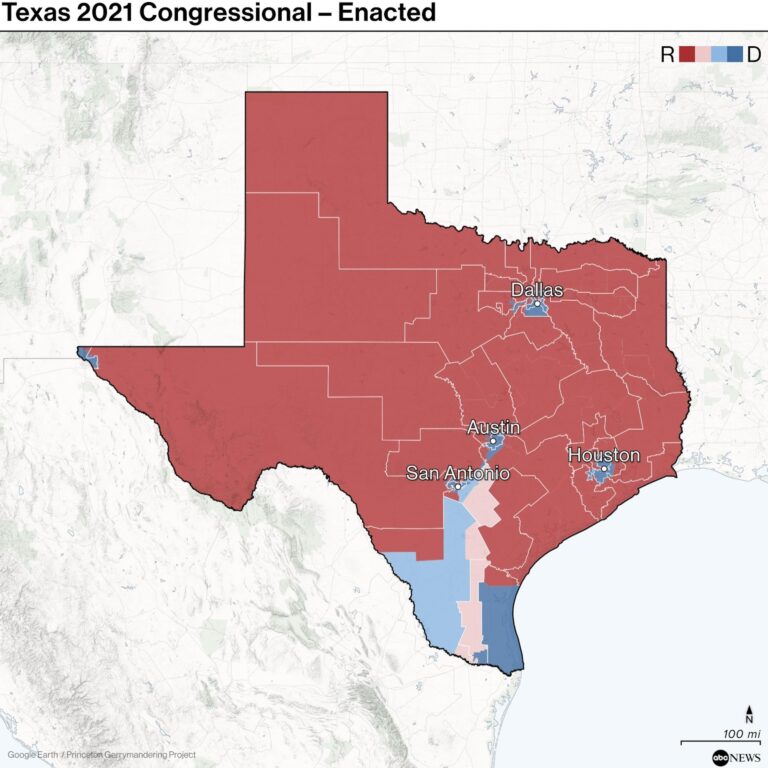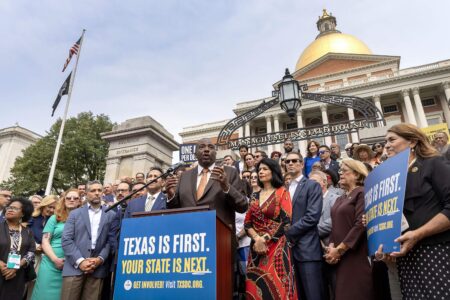Texas Advances Mid-Decade Congressional Redistricting Amid National Controversy
Texas’s Push for Mid-Decade Redistricting Sparks Legal and Political Debate
Texas is moving ahead with plans to redraw its congressional districts well before the usual ten-year cycle, igniting fierce discussions about the timing and fairness of such changes. Supporters argue that recent demographic shifts, highlighted by updated population data, justify a mid-decade adjustment to ensure districts accurately represent current communities. They emphasize that this approach promotes equitable voter representation in a rapidly evolving state.
However, opponents warn that redistricting outside the standard decennial schedule risks destabilizing electoral norms and may be exploited for partisan gain. Critics contend that frequent boundary changes can erode public trust in the democratic process and disproportionately benefit the party in power.
Within Congress, resistance is growing, with several lawmakers proposing legislation to prohibit mid-decade redistricting nationwide. Their key concerns include:
- Preserving electoral consistency: Maintaining stable district boundaries for a full decade to avoid voter confusion.
- Combating partisan gerrymandering: Preventing political parties from manipulating district lines between census cycles.
- Increasing transparency: Demanding more public involvement and oversight during redistricting efforts.
| Key Players | Stance on Mid-Decade Redistricting | Actions Taken |
|---|---|---|
| Texas State Legislature | In Favor | Proceeding with redistricting plan |
| Members of U.S. Congress | Opposed | Introducing federal ban proposals |
| Civic Organizations | Divided | Advocating for transparency and fairness |
Federal Lawmakers Seek Nationwide Ban on Mid-Decade Redistricting
In response to Texas’s initiative, an increasing number of federal legislators are rallying to block mid-decade redistricting across the country. They argue that allowing states to redraw congressional maps more frequently than once every ten years undermines the integrity of elections by enabling partisan actors to reshape districts for political advantage.
The proposed legislation aims to set firm limits on when redistricting can occur, emphasizing:
- Fair representation: Preventing manipulative boundary changes that disenfranchise voters.
- Electoral stability: Avoiding frequent alterations that confuse voters and weaken confidence.
- Democratic safeguards: Ensuring redistricting aligns strictly with census data and legal timelines.
| State | Mid-Decade Redistricting Status | Legislative Reaction |
|---|---|---|
| Texas | Actively Pursuing | Facing Congressional Opposition |
| California | Restricted to Decennial Redistricting | Supports Federal Ban |
| Florida | No Current Plans | Monitoring Federal Proposals |
Political and Voter Representation Consequences of Texas’s Mid-Decade Redistricting
The decision to redraw Texas’s congressional districts mid-cycle has profound implications for the state’s political dynamics. Advocates claim this move will better mirror the state’s evolving demographics, fostering more accurate and responsive voter representation. For example, Texas’s population grew by nearly 15% between 2010 and 2023, with significant increases in urban and suburban areas, which supporters say necessitates updated district boundaries.
Conversely, detractors caution that mid-decade redistricting could entrench partisan dominance by enabling the ruling party to engineer districts that marginalize minority groups and opposition voters. They highlight several risks:
- Partisan exploitation: Using off-cycle redistricting to secure political advantage rather than serve public interest.
- Voter disorientation: Frequent boundary changes may confuse constituents, potentially lowering turnout.
- Legal entanglements: Unprecedented timing could trigger costly lawsuits, delaying elections and governance.
| Potential Effect | Projected Outcome |
|---|---|
| Congressional Seat Distribution | Republicans may gain 2-3 additional seats |
| Minority Voter Influence | Possible weakening in urban districts |
| Judicial Challenges | Multiple lawsuits expected over fairness concerns |
Projections based on current demographic trends and legislative proposals as of 2024.
Calls for Federal Standards to Ensure Fair and Consistent Redistricting Practices
Following Texas’s controversial move, experts in law and public policy are urging the establishment of uniform federal regulations to govern redistricting frequency and procedures. Such standards would aim to prevent partisan abuses and promote transparency, ensuring that electoral maps are drawn fairly and reflect genuine population changes.
Leading recommendations from advocacy groups and scholars include:
- Mandating redistricting only once every ten years, aligned with the decennial census.
- Creating independent commissions to oversee the redistricting process, removing direct legislative control.
- Requiring public hearings and open access to proposed maps and criteria to enhance accountability.
- Implementing federal oversight to enforce compliance with civil rights protections and anti-gerrymandering laws.
| Federal Guideline Proposal | Objective | Anticipated Benefit |
|---|---|---|
| Decennial-Only Redistricting | Restrict map changes to once per decade | Enhances electoral stability and reduces partisan manipulation |
| Independent Redistricting Commissions | Remove partisan influence from map drawing | Promotes impartiality and fairness |
| Mandatory Public Engagement | Increase transparency and community input | Builds voter trust and accountability |
Conclusion: Navigating the Future of Redistricting in Texas and Beyond
As Texas proceeds with its mid-decade congressional redistricting, the national conversation intensifies over the balance between accurate representation and electoral integrity. While advocates emphasize the need to reflect shifting populations, opponents warn of the dangers posed by frequent boundary changes and partisan manipulation. With federal lawmakers pushing for a ban on mid-cycle redistricting, the coming months will be pivotal in shaping policies that could influence redistricting practices across the United States. The challenge lies in crafting a framework that respects demographic realities while safeguarding democratic principles through consistent, transparent, and fair processes.




